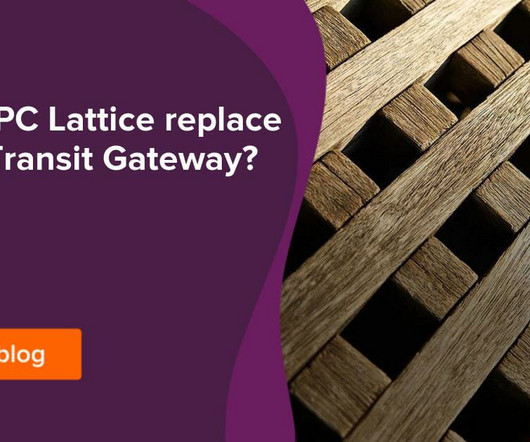Can VPC Lattice replace AWS Transit Gateway?
Xebia
AUGUST 29, 2023
VPC Lattice offers a new mechanism to connect microservices across AWS accounts and across VPCs in a developer-friendly way. The developers creating the microservices typically don’t like to spend time on network configurations and look for network specialists to set up connectivity. What are the core concepts in VPC Lattice?





















Let's personalize your content